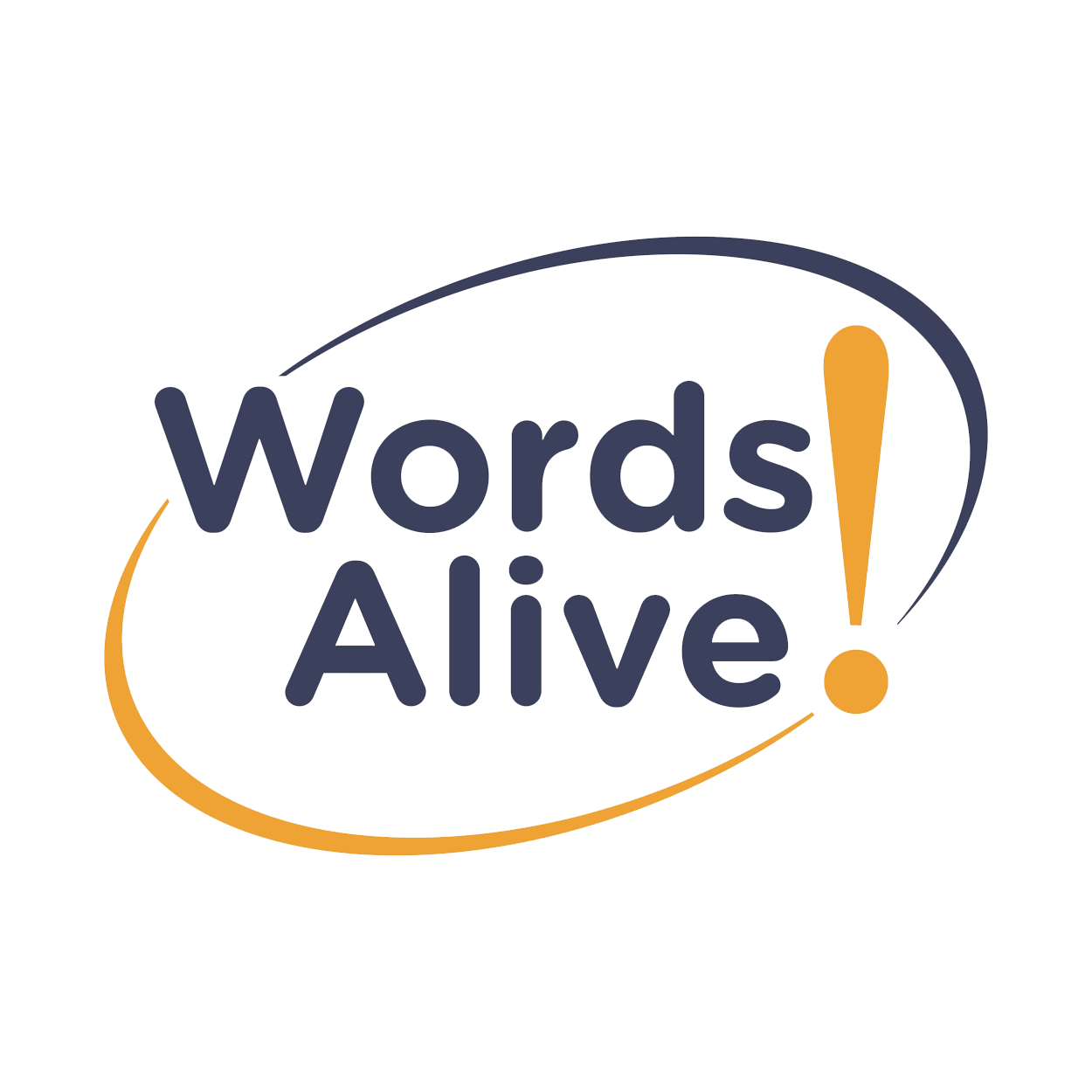Throughout the summer, the Words Alive team, especially our Young Adult Program Manager Marisol Vasquez and Program Director Melinda Cooper, has worked closely with children’s author and graphic novelist Marcie Colleen, a longtime presence in our community, to create Graphic Tales, this year’s collaborative Art & Lit project with multiple workshops! Read on to learn more about what has gone into this project.
Summer camp participants in our Art & Lit workshop, at City Heights Library, visited by local author Marcie Colleen and delivered in partnership with BIPOC Support Foundation.
To give some background, Words Alive prepares and runs an annual Art & Lit project in close connection with our Adolescent Book Group program and sometimes extended into our Read Aloud program. According to our Program Director Melinda Cooper, the project is a collaborative effort with local artists/organizations with a focus on encouraging teens to draw connections between art and literature and ultimately enhancing their learning and understanding. The execution of this core objective varies, with each year bringing a different theme, craft, and collaboration.
Please feel free to view our 2022 project on identity, the authentic self, and self-portrait through collage, which culminated in a month-long installation at the new children’s museum downtown!
The Art & Lit project will be a little this year and it has to do with our theme of belonging, Melinda said. We’re focusing on the community connection of coming together, she said, and we’ve created Graphic Tales as a collaborative workshop with multiple sessions that can be done any time throughout the school year.
By creating their own stories through graphic novels, teens will not only engage in the theme of belonging by telling the stories important to them, but also by engaging with the various different roles that play into making a graphic novel. At the beginning of the project, youth will get to enjoy a mini career fair where they get to try out the different roles involved in being a graphic novel creator.
“Writing a graphic novel is not a one person job. There's a writer. There's an illustrator. There's a stylist, a colorist, an art director, an editor. There are all of these fabulous, different roles that go into making a graphic novel,” Melinda said. “The whole point is that they're trying on these different hats and feeling out where their strengths and their interests are, and working together to create.”
To bring a fun, accurate and engaging graphic novel creation experience to the project, Words Alive has worked closely with Marcie Colleen, graphic novelist and author of the well loved Penguinaut!. With Marcie, the team has also piloted the program this summer with the BIPOC Support Foundation at City Heights Library.
“Working with Marcie is a delight. She is brilliant, kind and patient, and has very much approached the project from the same way as us, I think, a commitment to making reading matter to young people,” Melinda said. “She's really passionate about making reading matter and telling stories that need to be told.”
Furthermore, both Words Alive and Marcie believe in the power and value of graphic novels, although the format may not be considered as part of traditional literature.
Some people do not believe that reading a comic, or reading graphic novels is really reading, and so you get some pushback that it's not real literature, Marcie shared. However, there is value in the interplay between the visual and linguistic storytelling found in picture books and graphic novels. When youth engage with a picture book, not only are they engaging with the written word, but they are also building skills in visual literacy.
“Literacy is not just reading sentences. It's about newspaper articles and advertisements and visuals and body cues… there's so many different kinds of literacy that we engage in all the time and so often I think literacy gets boiled down to just the written word,” Marcie said. “For example, you can look at a character and learn by their body language that they’re sad. I love the whole idea of being able to teach people visual literacy as well.”
Seeing things visually is just another way of developing empathy and making that connection, Marcie also shared. There are some really beautiful stories, some real poignant and important stories, that have been told through graphic novels, she said. Some of the graphic novels Words Alive uses in its programs includes Wake: The Hidden History of Women-Led Slave Revolts and Magic Fish, a book on LGBTQI+ and Asian American identity.
Importantly, Words Alive recognizes the importance of making reading fun and relevant. Our Graphic Tales project combines the fun of graphic novels with the value and engagement of action-based learning, where children are able to learn on a much deeper level by collaborating to create stories that speak to them through their own efforts.
“A lot of the focus of Words Alive is to make reading fun, to make it accessible and to make kids and teens and families want to keep doing it every day so that we can have a culture of reading,” Melinda said.
During the program’s pilot this summer, the team and Marcie were able to see their efforts firsthand and witness kids get excited about creating graphic novels and get so involved in the entire process.
“The program could have very well just been a book discussion, but there’s something really special about the hands-on activity,” Marcie said. “The kids not only read graphic novels, but were actively engaged in creating their own”


